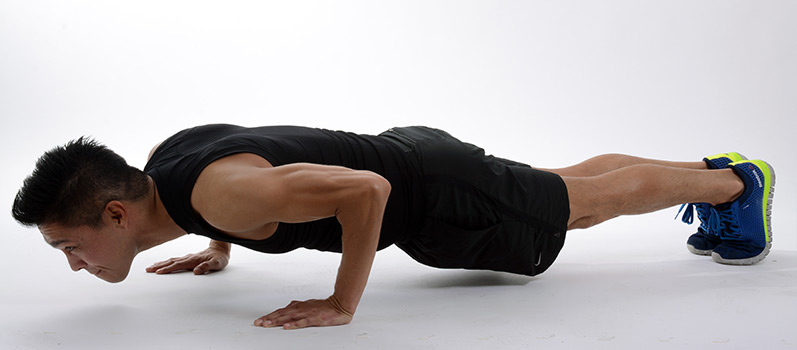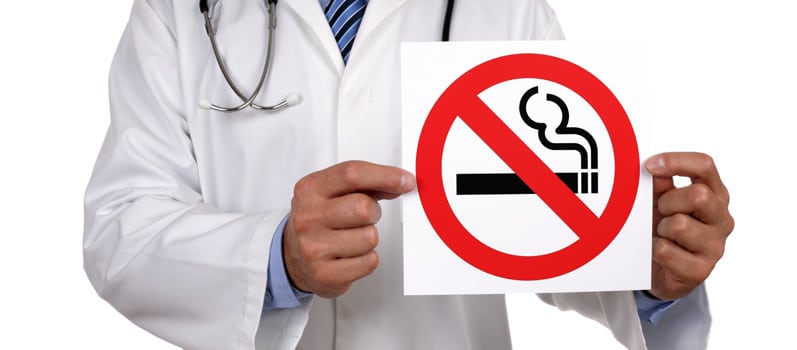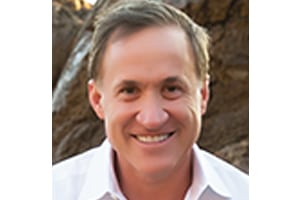
Health Maintenance for Adults
Many healthy adults aren’t really sure what they need to do to safeguard their health. The tradition of getting an annual physical exam was debunked decades ago; there is simply no evidence that getting a routine physical does anything to improve a healthy individual’s health. However, there are a few things that adults need to monitor in order to ensure they remain in tip-top health.
Blood Pressure
Elevated blood pressure is very common in adults, even relatively young adults. It is also asymptomatic and can slowly and progressively damage your organs. Starting in their early 20s adults need to regularly check their blood pressure every few months. Most pharmacies offer self-check machines. If you get several elevated readings in a row, it is time to consult your physician. Lifestyle changes are often sufficient to correct hypertension, but in some cases, medication is also needed.
Blood Lipid Levels
The age to begin screening for abnormal blood lipid levels and the necessary interval for screening is unclear. The U.S. Preventative Services Task Force (USPSTF) says there is no clear evidence to fully support screening people for abnormal blood lipid levels under the age of 40, while the CDC currently recommends that adults should get a baseline reading around age 21 and then get their blood lipid levels checked every four to six years. If you are at an elevated risk due to a family history, you may wish to get screened more often; the best interval for you to be screened for abnormal blood lipid levels should be discussed with your doctor.
Watch Your Weight
Although it is normal to gain a small amount of weight as you get older, keeping an eye on your weight and making minor lifestyle changes in order to keep weight gain under control is a far more effective method of weight management than letting yourself gain 30 pounds and then struggling to get it off. Weighing yourself daily at the same time every day is a very good health habit to develop. If you find your weight is creeping up, your doctor can advise you on lifestyle changes to assist you in keeping it under control.
Cancer Screenings
Everyone should consider participating in a colorectal screening program starting at age 50; there are several options for screening that you should discuss with your doctor. Men should discuss with their doctors whether they should participate in a prostate cancer screening program and if so, at what age to start. Women should get screened for cervical cancer every three to five years and consider participating in a breast cancer screening program. The USPSTF currently recommends starting breast cancer screening at age 50 and getting a screening every two years.

An Observational Study Suggests Nap Benefits
A recent study published in the journal Heart suggests that taking the occasional nap during the day (once or twice a week) can potentially lower your risk of a heart attack or stroke.
The amount of time spent napping and any frequency above twice per week did not seem to influence the results.
Researchers studied 3,462 randomly selected residents of Lausanne, Switzerland. The participants of the study were between the ages of 35 and 75 years. They had an initial check-up where information about sleep and nap patterns were recorded. The participants were monitored for an average of five years.
More than half of all participants said that they typically did not take naps. Nineteen percent reported taking one or two naps per week, 12 percent reported taking between three and five naps per week, and 11 percent reported napping almost daily.
During the monitoring period, 155 non-fatal and fatal cardiovascular disease events occurred. Those who reported one or two naps per week reduced their risk by about 48 percent compared to those who took no naps, even after controlling for factors like age, blood pressure, cholesterol, and nighttime sleeping habits.
The authors of this study indicate that this is an observational study only and does not establish cause. It also relied on the memories and reporting of the participants themselves. More research is needed to fully uncover how powerful naps can be for health.

New Study Looks at Apples and Tea for Living Longer
You’ve heard the expression that “an apple a day keeps the doctor away,” but a new study published in the journal Nature Communications is demonstrating that an apple each day, especially combined with a cup of hot tea, can extend your life.
Researchers at Edith Cowan University’s School of Medical and Health Sciences studied data from more than 53,000 Danish citizens that was collected over a period of over 23 years. Those who regularly ate foods rich in flavonoids had a reduced risk of developing heart disease or cancer. This lowered risk was especially noticeable in heavy smokers and drinkers due to their higher likelihood of chronic diseases.
Flavonoids have anti-inflammatory properties and can improve blood vessel function, which is why they are likely to help reduce the risk of these conditions.
While these findings highlight the importance of consuming flavonoid-rich foods to prevent cancer and heart disease (these foods include oranges, blueberries, broccoli, and other foods as well), it does not counteract all of the increased risk of death caused by smoking or drinking.
The recommended daily amount of flavonoids is 500mg.

Can You Do More Than 40 Push-Ups? You May Be Less Likely to Develop Heart Disease
A study published in JAMA Network Open demonstrates that men who can perform at least 40 push-ups at once may be less likely to suffer from heart disease within the next ten years. In fact, the data in this study shows that men who can log more than 40 push-ups at once have a 96% reduced risk of heart disease.
The study was performed by researchers at the Harvard T.H. Chan School of Public Health, who claim that their study was the first to show a link between heart disease risk and push-ups capacity. To perform the study, the researchers reviewed the 2000-2010 health data of 1,104 active male firefighters. At the beginning of the study, the average male participant was about 40 years old.
The firefighters in the study performed as many push-ups as they could, and also had their treadmill tolerance tested (the treadmill tolerance was not linked to any findings). At the end of the study period, 37 participants had suffered from a heart disease-related condition. Of those 37 men, all but one of them had been unable to achieve more than 40 push-ups in the initial testing.
The study’s first author, occupational medicine resident Justin Yang, stated that the findings could show push-up capacity to be an effective and affordable method to help assess risk of heart disease.
However, more research is needed to determine the link—and because the study was performed on middle-aged men with active jobs as firefighters, the results should not be assumed to be the same for women or men of different occupations or ages.

Cardiac Arrest in Young Athletes is Rare, Yet Unpredictable
A new study published in the New England Journal of Medicine looks at cardiac arrest in young athletes. The good news is that the risk of cardiac arrest among athletes younger than 45 is rare—less than one case per 100,000 competitive athletes in Ontario, Canada.
The bad news is that these fatal cardiac arrest episodes are not likely predictable, which makes prevention difficult. Researchers discovered that more than 80 percent of the cases will not be caught during what is called pre-participation screening. This type of screening is based on the idea that doctors can detect underlying heart abnormalities, and then keep young people out of sports.
In some countries, such as Europe, electrocardiograms (ECGs) are also used to detect abnormalities early. But in general, these screenings rely on physical exams and questions about alarming symptoms and family history.
Cardiac arrest is fatal within minutes without medical intervention. It is characterized by the heart stopping, often due to a sudden rhythm disturbance.
The study looked at cardiac arrests that were treated by paramedics in a large region of Ontario, while focusing on young athletes (aged 12 to 45) who suffered a cardiac arrest while playing sports. Of the 16 who had cardiac arrest, only three had an underlying heart condition that could have been detected with a screening.
While cardiac arrest typically cannot be predicted, coaches and other players can be prepared to jump into action by calling 911 and beginning chest compressions immediately.

Secondhand Smoke Dangers & Protection
Many smokers—and non-smokers who are exposed to those smoking nearby—do not understand the true dangers of secondhand smoke. Understanding the types of secondhand smoke and potential negative effects can help both smokers and non-smokers mitigate risks.
Dangers of Secondhand Smoke
Secondhand smoke can contribute to health problems such as lung cancer, heart disease, and breathing problems like shortness of breath and wheezing. Medical professionals have noted that health problems associated with smoking can develop in those who do not smoke.
There are significant risks to more vulnerable parts of the population, including pregnant women, babies, and children.
- Pregnant women – Exposure to secondhand smoke can result in babies with a low birth weight.
- Babies – Infants who spend time around secondhand smoke are more likely to experience lung infections and other problems.
- Children – Health issues such as asthma can surface in children exposed to secondhand smoke.
Types of Secondhand Smoke
Secondhand smoke lingers in the air for hours after someone smokes nearby, and it is harmful to breathe in, even if you don’t breathe it in for long. This is referred to as passive smoking (also called involuntary smoking).
There are two types of secondhand smoke, and anyone around a smoker can be exposed to both:
- Sidestream smoke – This is the smoke that comes from the cigarette itself while it is lit.
- Mainstream smoke – This is the smoke that the smoker actually breathes out while exhaling.
Recommendations
If you are currently a smoker, you can protect your family and friends by quitting as soon as possible. Your doctor can help you with the tools you need to quit.
The best ways to protect yourself from secondhand smoke are to avoid places where smoking is permitted inside and other spots with heavy smoke. If you have caretakers for your loved ones, request that they not smoke around your family. Tell children and other family members that they should walk a good distance away from anyone smoking outside in order to avoid inhaling smoke.








